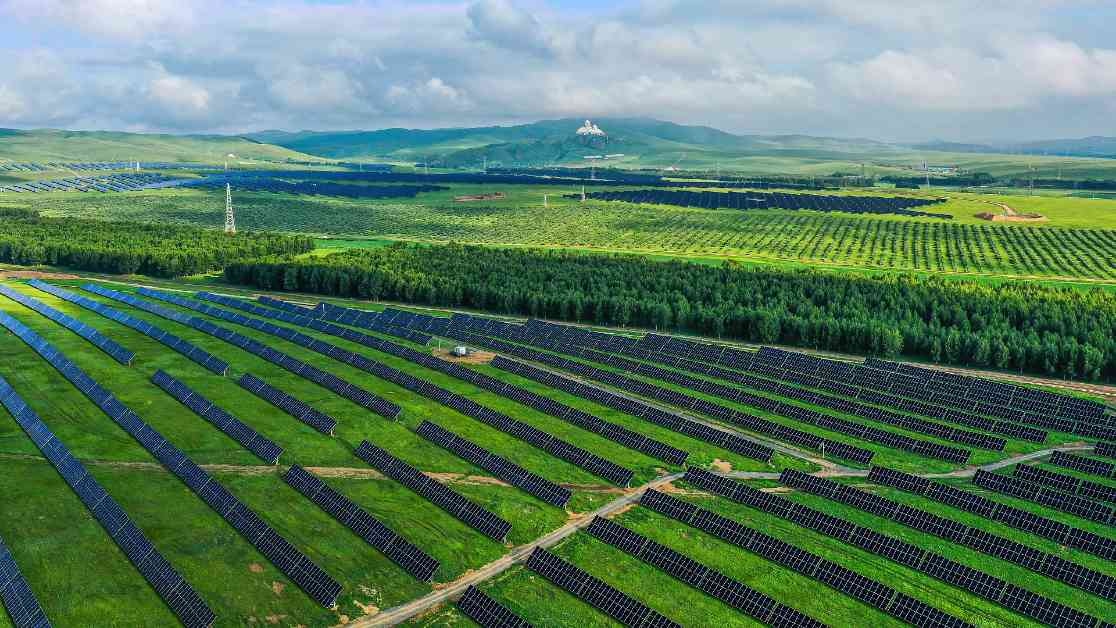China has recently introduced guidelines to propel the country towards a more sustainable future by focusing on green transitions in various sectors of economic and social development. These guidelines are in line with global efforts to combat climate change, as emphasized in BP’s Energy Outlook 2024. The urgent need to transition from fossil fuels to low-carbon energy sources has been highlighted in this report.
The National Development and Reform Commission (NDRC) issued these guidelines with the aim of achieving significant progress in China’s green transition by 2030. By 2035, the country aims to have established a green, low-carbon, and circular economy, ultimately achieving the goal of “Beautiful China.” These guidelines have been introduced at a crucial time when global energy consumption patterns are facing scrutiny, with global carbon emissions continuing to rise despite increased investments in low-carbon energy sources.
The guidelines encompass a comprehensive approach, including optimizing territorial space development, promoting green transitions in industries and energy sectors, and advancing green transportation and urban-rural development. Key goals outlined in the guidelines include increasing non-fossil energy to 25 percent of total consumption by 2030 and expanding the energy conservation industry to 15 trillion yuan (about $2.1 trillion).
An example of this green transition can be seen in the solar PV project completed at Nanjing’s Maqun Bus Depot, where 1,770 rooftop panels were installed to generate green electricity for the depot’s operations. The surplus power generated is fed back into the grid, showcasing a commitment to environmental goals and sustainable urban development.
Liu Qiong, Director of the National Energy Conservation Center at the NDRC, emphasized the importance of incorporating sustainability into all aspects of development and promoting this transition across various sectors and regions to enhance China’s development strengths and build a competitive modern economy. The guidelines also target the green transition in consumption, encouraging the adoption of green and healthy lifestyles.
China’s green transition efforts are crucial in the global energy landscape, especially as the world faces challenges in transitioning from an “energy addition” phase to an “energy substitution” phase where low-carbon energy sources would need to grow rapidly to reduce fossil fuel consumption and carbon emissions. Despite growing investments in renewable energy, global carbon emissions have been on the rise, posing concerns for achieving climate goals.
China’s role as a major consumer and producer of energy is significant in the global energy landscape. The country’s energy demand is projected to peak in the mid-to-late 2020s and decline by 2050, reflecting broader trends towards renewable energy. The guidelines emphasize the importance of financial instruments and investment mechanisms in supporting green projects, with ongoing efforts to advance the green transition through carbon emission reduction support tools and green financing options.
However, challenges remain as China’s energy structure heavily relies on coal, and fossil fuels continue to play a significant role in the economy. Global environmental and climate issues are also becoming increasingly politicized, with green trade barriers escalating. Addressing the three elements of the energy trilemma – security, affordability, and sustainability – is crucial for a successful and enduring energy transition.
As China takes steps towards a greener future, its actions could significantly impact the global trajectory of energy consumption in the years to come. The country’s commitment to green transitions and sustainability is essential in addressing the challenges of climate change and ensuring a more sustainable future for generations to come.

















